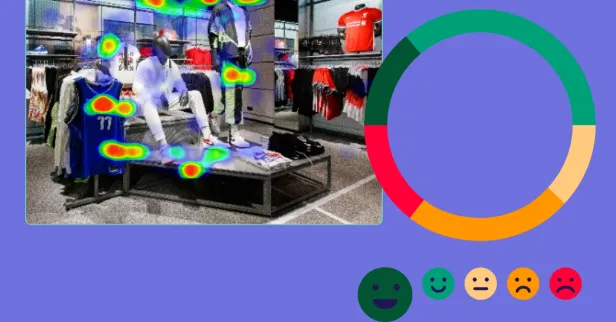This piece is the third and final in a three-part series exploring the ways AI makes it difficult to lose touch with consumers in go-to-market and product launch strategies. Specifically, we are investigating the excuses often used when organizations forget to center their customers, and how AI is making those excuses obsolete. Click these hyperlinks to read part 1 and part 2.
Excuse 3: “Our executive team is asking us to remain focused on the financial goals of our product launch. There’s not much room for fluffy consumer insights research.”
As AI brings market research methodologies to life with a prompt, deploys them in seconds, then analyzes and summarizes findings in expert fashion, there are obvious implications for lower costs, higher quality, and faster speed in research.
In fact, the entire cost-benefit ratio is upended.
By prioritizing consumer insights throughout your go-to-market motion, you directly impact the bottom line, and increasingly so as research becomes prompt-created, prompt-deployed, and prompt-analyzed in-platform.
Consider how these traditional market research techniques can improve key financial metrics for the executive team when they no longer require weeks or months to execute:
Improved Operating Margin
Reduced development costs thanks to pre-launch validation, fewer product failures due to better market alignment, and increased post-launch sales all contribute to a healthier operating margin.
Enhanced Price-to-Earnings Growth (PEG Ratio)
A strong product-market fit driven by consumer insights leads to faster and more sustainable revenue growth, boosting your PEG ratio. This metric is particularly attractive to investors, showcasing a company's ability to translate product offerings into financial success.
Maximized Return on Ad Spend (ROAS)
Traditional marketing campaigns can be a gamble. By targeting your marketing efforts based on real customer preferences and behaviors derived from AI-powered research and buyer persona constructions, you ensure you get the most out of your marketing budget. This translates to a maximized return on ad spend, allowing you to invest more efficiently in customer acquisition.
Reduced Customer Acquisition Costs (CAC)
Pinpointing your ideal customers is at the heart of AI-powered market research. This precision targeting translates directly into lower acquisition expenses. No longer do you need to cast a wide net hoping some leads stick – you can tailor messaging and channels based on genuine insights, yielding higher conversion rates with less overall expenditure.
Optimized Pricing Strategies
AI's ability to analyze vast datasets, including competitor pricing, market trends, and customer sensitivity, unveils hidden pricing opportunities. This allows you to confidently establish price points that maximize revenue while maintaining a competitive edge and controlling for diminished demand. Whether premium pricing is justified or strategic discounts would ignite sales, AI-derived data eliminates guesswork, as does prompt-generated traditional structured studies such as Gabor-Granger and Van Westendorp (assuming you’re working in an AI-powered platform).
Improved Inventory Management
Demand forecasting fueled by AI drastically increases inventory efficiency. By merging historical sales data with insights on consumer intent and upcoming trends, you can better predict product demand, reducing stock-outs while minimizing overstocking. This streamlined inventory control frees up capital and reduces waste.
Enhanced Customer Lifetime Value (CLV)
Loyal customers are the bedrock of profitability. AI uncovers the factors driving satisfaction, allowing you to refine your product offerings, customer service, and post-purchase experiences. These efforts lead to increased customer retention and a boost to customer lifetime value, positively impacting financial performance.
Increased Innovation Success Rate
AI-informed product development increases the odds of market acceptance. Analyzing search trends, social media conversations, and direct feedback reveals unmet customer needs. This allows your product teams to target innovation towards areas with demonstrable demand, dramatically increasing the chances of innovation success.
If your executive team doesn’t see the value of consumer insights research because they’ve been burned in the past by lengthy studies that cost a fortune and basically quantify the obvious, it may be helpful to engage in a refresher on how AI is changing everything. It may also be helpful to book a demo with a software platform that is powered by AI; where prompts can build, deploy, analyze, and summarize consumer market findings, saving your budget many thousands of dollars, dramatically speeding up the time-to-insight ratio, and delivering unprecedented quality for minimal cost and time.
